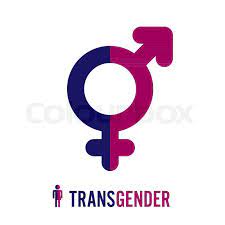FTM (female-to-male) testosterone therapy is an important step for many trans men seeking to align their physical appearance with their gender identity. But what happens in the first week after starting testosterone? Understanding the changes that may occur can help ease anxiety and provide insight into the transition process. Here’s a timeline chart of what you might experience during the first week of testosterone therapy.
What’s the Buzz About FTM Testosterone Therapy?
FTM testosterone therapy is a medical treatment designed to induce physical changes in individuals assigned female at birth but who identify as male or non-binary. This therapy typically involves the use of testosterone, a hormone that plays a significant role in the development of male characteristics. Many people undergo this therapy to alleviate gender dysphoria, enhance their sense of self, and foster a more authentic experience of their gender identity.Penile Inversion Surgery Before And AfterHow To Start Gender Transition
The benefits of testosterone therapy extend beyond physical changes. Many individuals report increased energy levels, improved mood, and a greater sense of confidence. However, the journey is highly individual, and the effects can vary significantly from person to person. Understanding what to expect can help individuals prepare for this transformative experience.
Day 1: What to Expect When You Start Testosterone
Congratulations! You’ve taken the first step in your journey. On the first day of testosterone therapy, you might not notice any significant changes right away, and that’s perfectly normal. Many people experience an initial sense of excitement and relief, knowing that they’re on their way to aligning their physical self with their gender identity. However, your body needs time to adjust to the new hormone levels, so don’t worry if you don’t feel different immediately.
You may experience a slight increase in energy or a sense of heightened awareness. It’s also common to feel a mix of emotions—elation, anxiety, or even a little doubt. These feelings are normal, and it’s essential to give yourself grace as you embark on this new chapter. Remember, every individual’s journey is unique, and your experience will unfold in its own time.
Day 2: Mood Swings and Energy Levels Explained
By the second day, you might start to notice some fluctuations in your mood. The introduction of testosterone can lead to changes in brain chemistry, and this can manifest as irritability or sudden bursts of energy. While it’s common to feel more energized, the emotional shifts can catch you off guard. Be prepared for these mood swings, and don’t hesitate to reach out to friends or support groups to talk about your experiences.
These emotional ups and downs are part of your body adjusting to the new hormone. It’s crucial to practice self-care during this time. Engage in activities that make you feel good, whether it’s exercise, journaling, or simply chatting with a friend. Your emotional and mental well-being is just as important as your physical changes, so don’t neglect it.
Day 3: Physical Changes You Might Notice Already
On the third day, you may start to experience some subtle physical changes, even if they’re not immediately visible to others. Some individuals report feeling a difference in their muscle tone—perhaps it’s a little firmer or more defined. While these changes are still minimal at this stage, it’s a sign that testosterone is beginning to influence your body.
You might also notice changes in your fat distribution. Some people experience a shift in weight toward their abdomen, which is a common change during the early stages of testosterone therapy. It’s essential to keep in mind that these variations are just the beginning of a much more extensive transformation. Keeping a positive mindset and being patient will serve you well as you continue your journey.
Day 4: Skin, Hair, and Body Changes: The Lowdown
As you reach day four of your testosterone therapy, you may begin to notice changes in your skin and hair. Many individuals experience increased oiliness in their skin due to the effects of testosterone, which can lead to acne. Although this might be frustrating, it’s often a temporary phase as your body adjusts. Keeping your skincare routine consistent can help manage any breakouts.
Hair growth is another exciting change that may start to occur. You may notice increased hair on your body and face, which can lead to more pronounced arm and leg hair. It’s also normal to start seeing some fuzz on your cheeks or chin. Embrace these changes as they’re a natural part of your transition. If you have concerns about excessive hair growth, consulting with a healthcare provider can provide guidance on managing these effects.
Day 5: Emotional Rollercoaster: Why It Happens
By the fifth day, the emotional rollercoaster may continue. Many individuals experience a mix of increased confidence and moments of insecurity. This emotional turbulence can be linked to a cocktail of hormones adjusting in your body, alongside the mental shift that comes with social and physical changes. It’s vital to recognize that these feelings are part of the process.
Consider journaling your experiences or discussing them with supportive friends or a therapist. This can help you process your emotions and provide insight into your evolving identity. Remember, it’s okay to feel vulnerable; being on this journey is a significant and brave step toward authenticity.
Day 6: Tracking Progress: What to Keep in Mind
As you approach day six, it’s a great idea to start tracking your progress. Whether it’s through journaling your thoughts, taking photos, or simply reflecting on how you feel, documenting your experiences can help you appreciate the journey. It’s common to experience a mix of excitement and anxiety about the changes you’re undergoing, so having a record can also serve as a source of encouragement.
Keep in mind that every individual’s experience is different. Some may notice rapid changes, while others may see a slower progression. Both paths are valid, and it’s essential to embrace your unique journey. If you have questions or concerns, don’t hesitate to communicate with your healthcare provider to address any issues.
Day 7: Looking Ahead: What’s Next After Week One?
Congratulations on completing your first week of testosterone therapy! As you reflect on the past week, it’s essential to understand that this is just the beginning of a long and transformative process. Many individuals will continue to experience changes in the weeks, months, and years ahead, so staying informed and connected is crucial.
Looking ahead, consider setting goals for yourself and what you hope to achieve in the coming weeks. Whether it’s building a support network, engaging in self-care routines, or educating yourself about the transition process, every step you take is vital. Remember, you are not alone on this journey—there are resources and communities available to support you as you continue to navigate this exciting time in your life.
Transitioning is a deeply personal journey, and each person’s experience is unique. The first week of testosterone therapy can be filled with a whirlwind of emotions and changes, but understanding what to expect can help you feel more grounded. As you move forward, keep focusing on your well-being, and don’t hesitate to reach out for support. Here’s to embracing your true self and all the exciting transformations that lie ahead!


